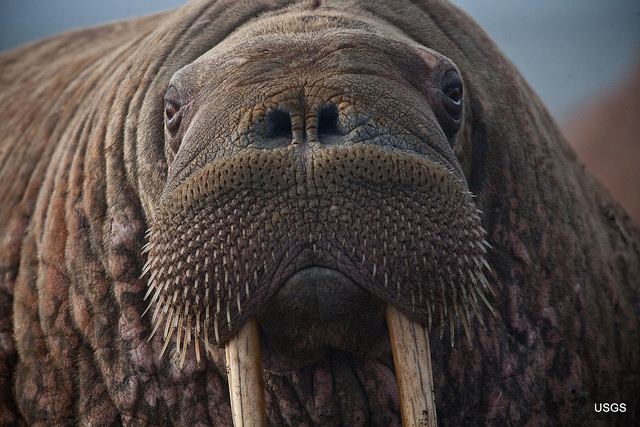Search Results for Tag: warming
35,000 walrus – our #numberoftheweek
Alaska has seen a magnificent but also alarming natural spectacle a few days ago, when 35,000 walrus climbed a beach in the north-west of the US state. According to the National Oceanic and Atmospheric Administration (NOAA) the gathering of walrus on shores is related to the loss of summer sea ice because of a warming climate. But an intact ice sheet is essential for the survival of the pacific walrus. They need it as a place to rest, because walrus cannot swim indefinitely.
The animals usually dive from the icy rocks down to the bottom of the Bering Sea to hunt for snails, worms and mollusks. They even give birth on ice. During the summer period the walrus follow the receding melting ice sheet up to the Arctic Ocean which is much deeper than the Bering Sea. With a shrinking ice sheet the walrus lose the place to rest they rely on, and they find less food because they no longer reach the bottom of the sea.
That’s why walrus are heading for beaches for rest. The first individuals of the current wave were spotted in mid-September and have been moving on and off-shore since then. An additional problem of a mass beaching like this is the danger of stampedes among the animals, killing mostly the young.
Windy City Preparing for Reality of Climate Change

The New York Times recently featured an interesting article about what one major city is doing to prepare for the inevitable: global warming. The U.S. city of Chicago, known as the “Windy City,” is used to cold winters and pretty warm summers, but those summers could get a lot hotter, and soon.
A team of climate scientists put together a report for city planners about the future of Chicago as the city continues to get warmer. And the city was in for a shock: by the end of the century, Chicago could experience temperatures of 32 degrees (celsius) or more for up to 72 days. The city only got that hot for about 15 days a year during the last century. That added heat could have some serious consequences, like damaged roads and property as well as more heat-related deaths every year.
So city planners are being proactive. They’re using thermal radar to find Chicago’s hottest zones and adding green vegetation there instead of pavement to create a cooler surface. Concrete streets are getting a facelift, too, with a fresh coat of pavement that lets rainwater seep through into the ground below. And the state’s famous white oak trees are being replaced with special trees that keep cool in hot climates–like sweet gum trees.
Chicago wants cope with its warming temperatures now rather than later in the hope that the transition won’t be so tough later on. So what do you think: is this a good model for cities to prepare for the future?
Ocean Warming

We already know a lot of the effects that climate change has on our planet–like extreme weather, vanishing resources and rising water levels. But the earth’s water levels aren’t just rising, they’re getting warmer, too. And that has an impact on the wide variety of marine life that lives in our oceans.
A new study in the “Nature Climate Change” Journal shows that temperature hikes in the southern hemisphere ocean are starting to have a negative impact on marine species too, especially a type of fish called the “banded morwong” (pictured above). One of the study’s authors says ocean warming can have a serious effect on how a species grows, how the animals’ bodies function and even how they behave. Usually, warmer temperatures in the waters make a species multiply faster. But the ocean has warmed up too much at this point, and it’s taking a toll on the banded morwong population. Scientists were able to see increased stress on the fish, and that’s caused some of the morwong to die.
If you live near the ocean, tell us some climate change indicators you’ve seen around you…





Feedback